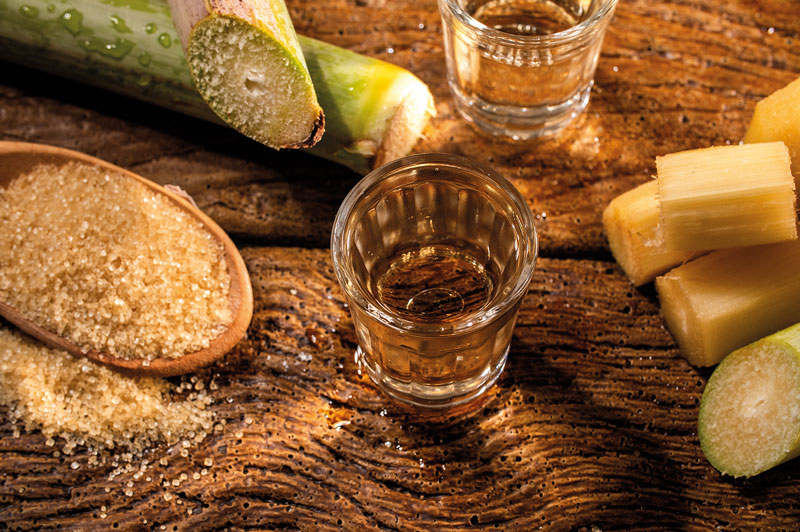
Let’s be honest, in the French West Indies we are a little chauvinistic (with good reason) and swear by our agricultural rum made with pure sugar cane juice, considering that molasses-based rums are the specialty of the Hispanic and English islands. But did you know that before distilling pure sugar cane rum, we initially made rum from molasses?
Before we go any further, a small explanation of the different kinds of rum is essential. In fact, there are three main types of rum in the world, and the appellation depends on the raw material used to produce it: molasses-based rum, also called traditional rum, industrial rum, or sugar refinery rum; agricultural or pure sugar cane rum; and rum made from sugar cane honey. The sugar cane honey being a reduction of sugar cane juice, close to concentrated sugar cane syrup.
To better understand the history of rum, we have to look at the history of sugar cane. In fact, when the islands were discovered, the colonizing countries sought to exploit fertile tropical fields. Then there was sugar cane, the “plant that provides honey without the need for bees,” discovered in Papua New Guinea. Sugar cane elicited great interest, but remained hard to exploit in Europe where it depleted the soil. By the end of the 15th century, Christopher Columbus brought sugar cane to the islands, where it met with ideal conditions to thrive. Refineries developed rather rapidly and sugar became the primary colonial crop, sadly causing the tragic period in human history that followed. The reason being that sugar required a lot of manpower and also served as the principal currency in this triangular commerce.
Sugar is produced by the crystallization of sugar cane juice, but during the process there is one part that does not crystallize: the molasses. Considered as a waste by-product, the molasses first served to feed livestock. But there was still some sugar left, and if there is sugar, there can be alcohol: molasses-based rum was born!
Sugar cane became the gold of the French West Indies and rum made from molasses provided a valuable use for this “waste.” At the height of the sugar industry in Guadeloupe, the island could count 11 main factories and more than 400 refineries. But at that time, it was not imaginable to use pure sugar cane juice to produce rum directly, as it was considered a second-tier product.
As the original rum was made from molasses, you can understand why it is called “traditional” rum; a nicer, more appealing name than “industrial rum” or “sugar refinery rum.”
* The abuse of alcohol can harm your health, consume in moderation.
Find Victoria Payen’s blog on:
www.lacasestbarth.com
Auteur :Victoria Payen / Crédit photo : Shutterstock

